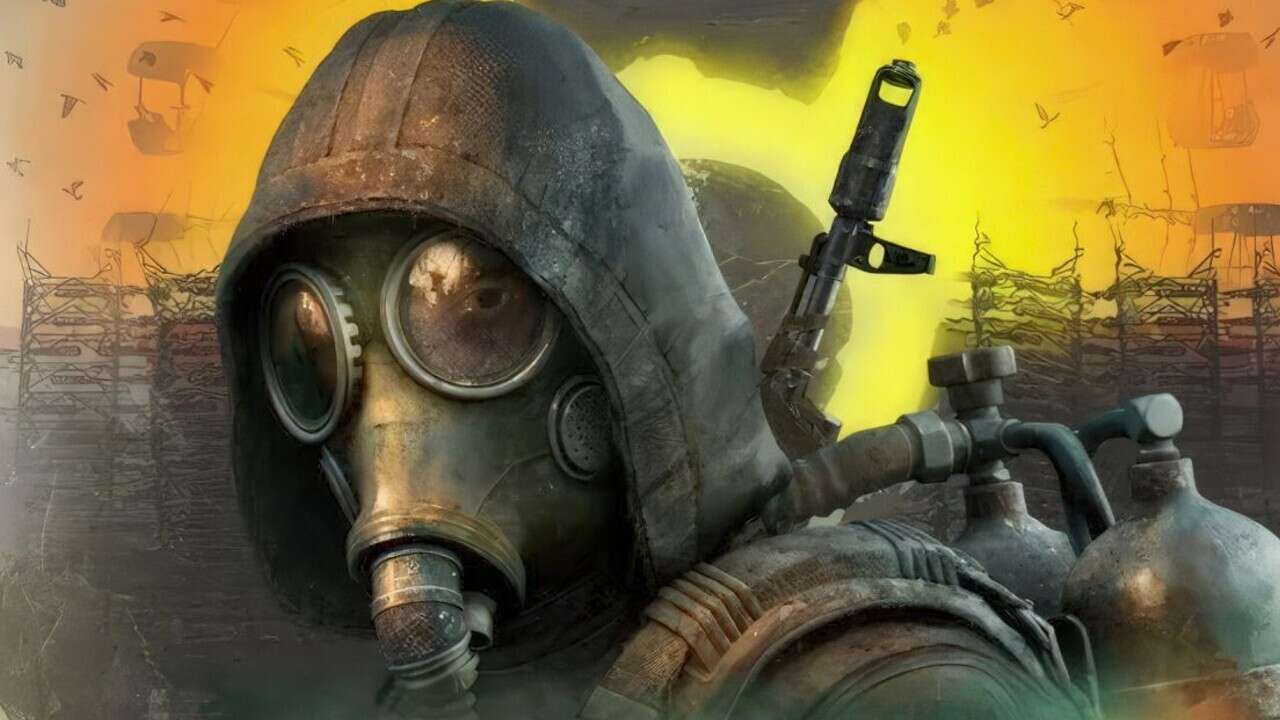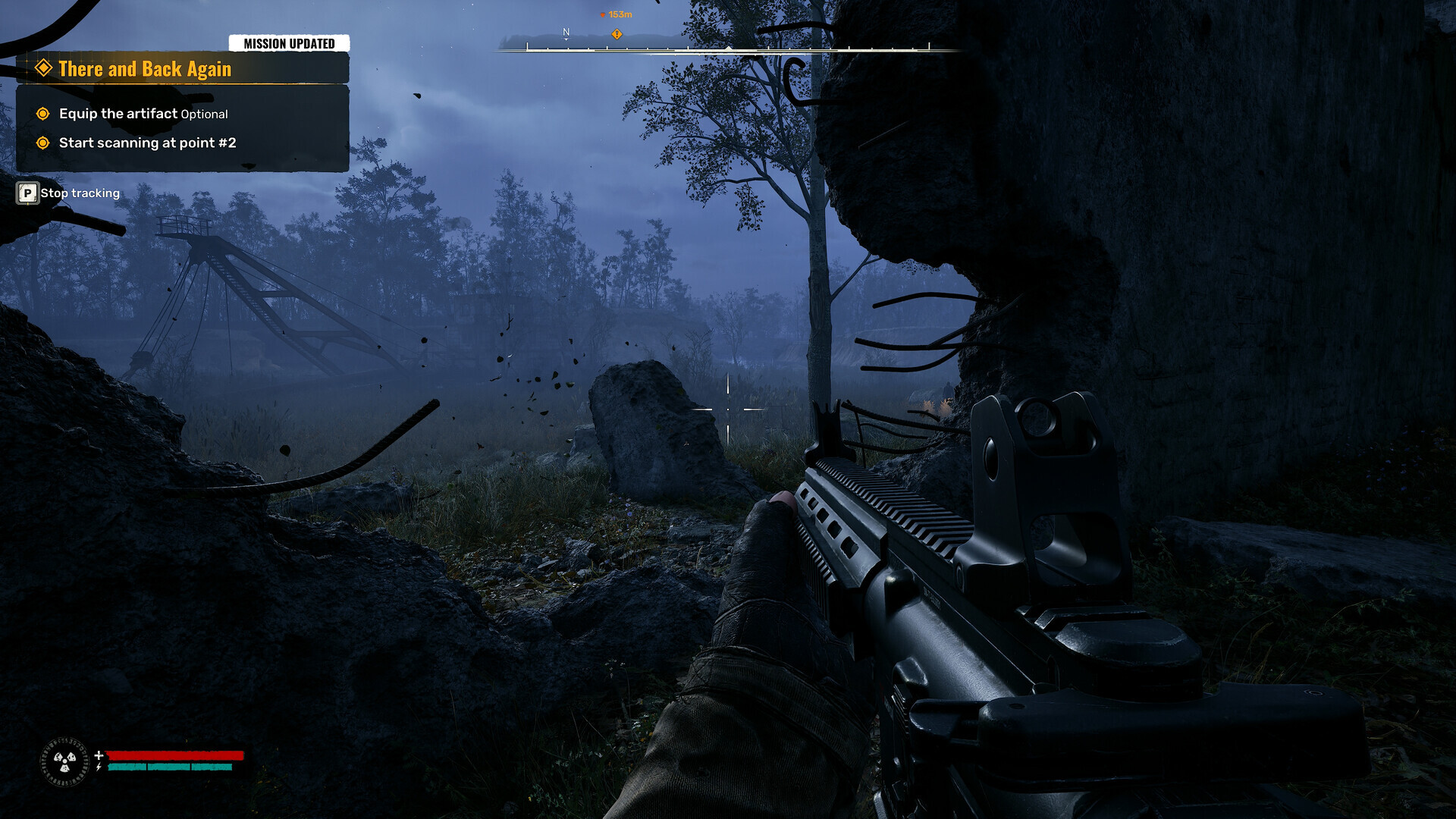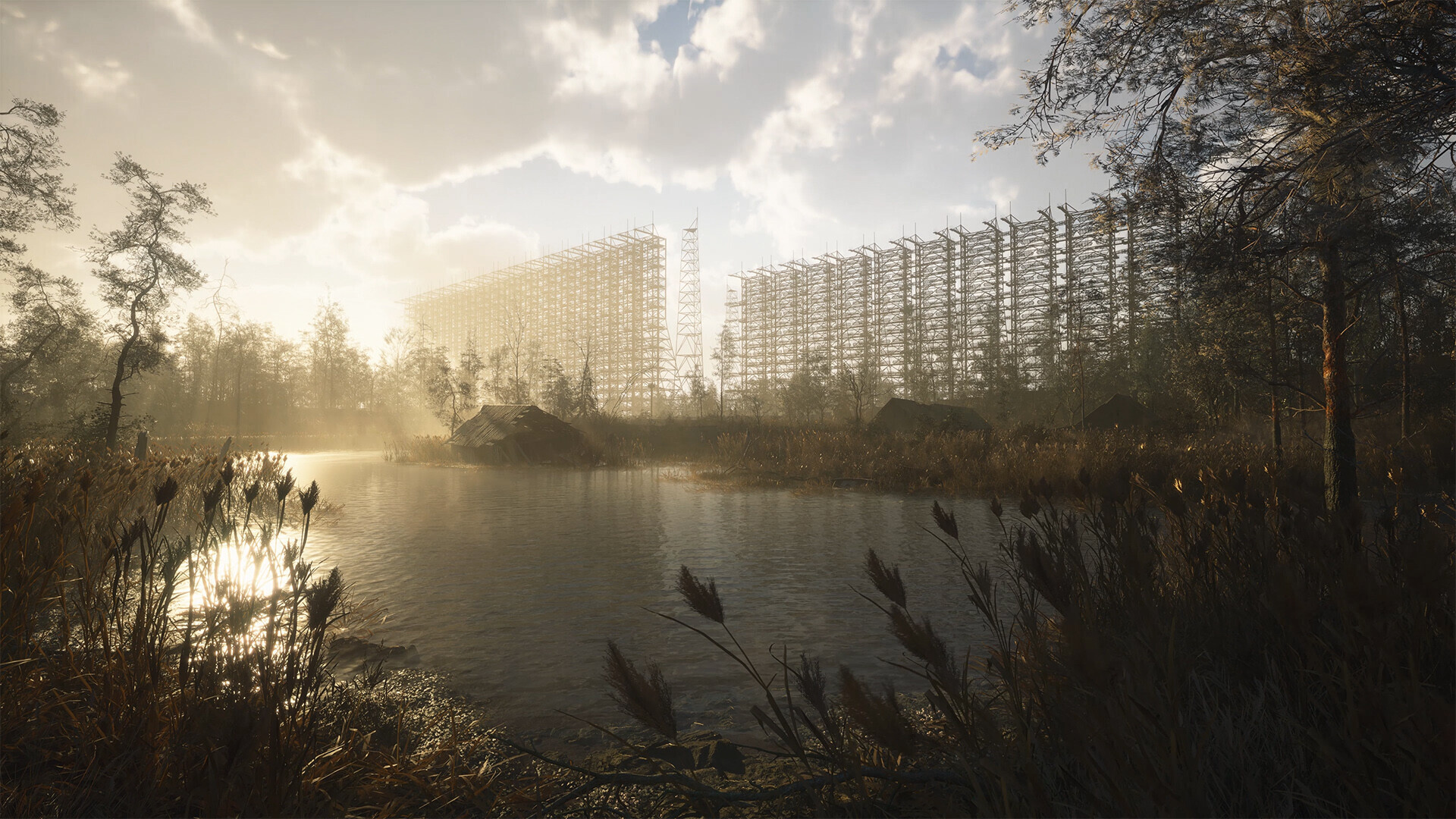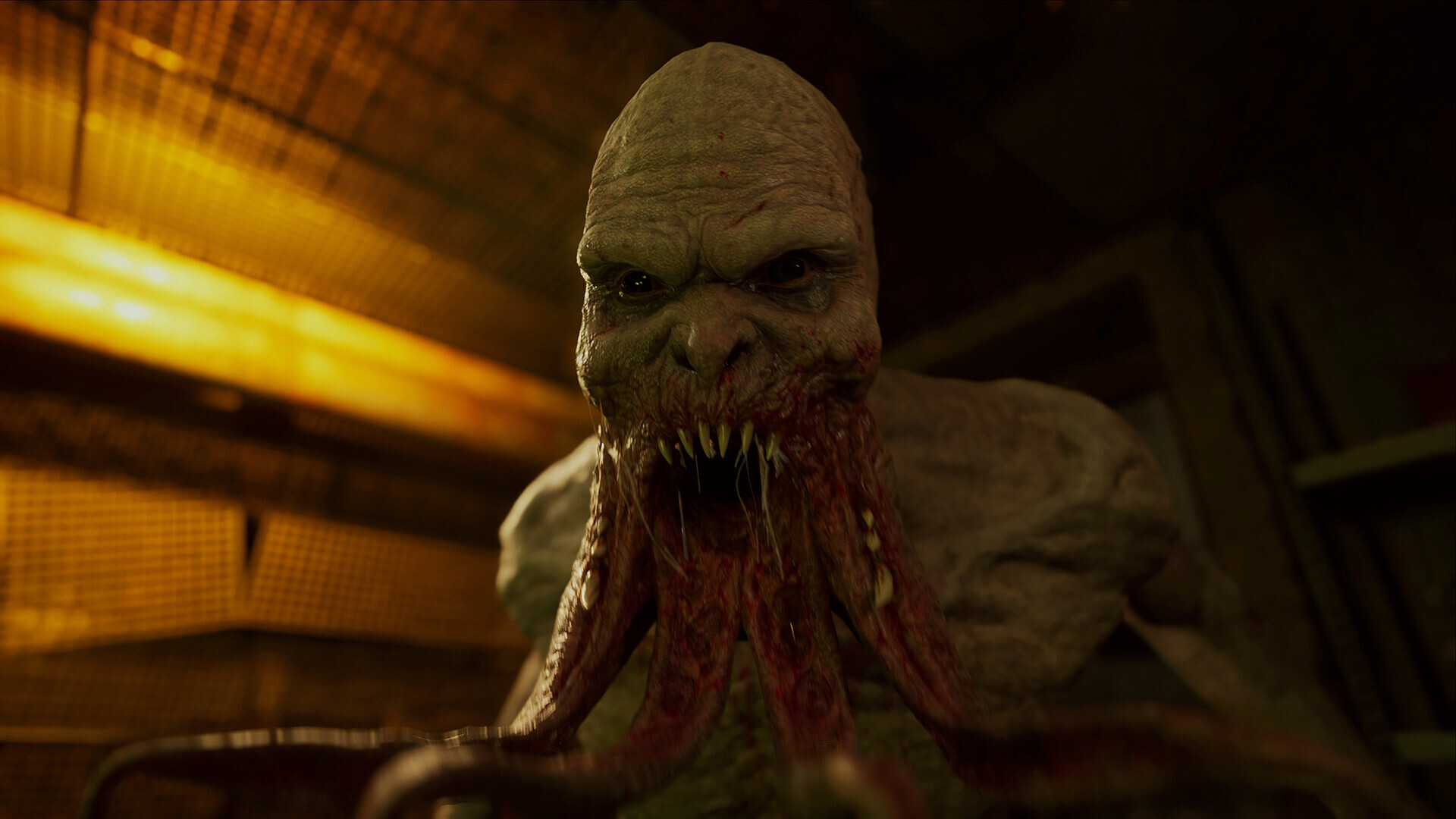Stalker 2: Heart Of Chornobyl Review - In The Zone

Stalker 2: Heart of Chornobyl is rough around the edges, but its propensity for creating emergent moments in a deadly and alluring world makes this trip back to the Zone a fraught and compelling experience
It's incredible that Stalker 2: Heart of Chornobyl even exists. In addition to weathering the COVID-19 pandemic, developer GSC Game World was faced with the Russian invasion of its native Ukraine, kicking off a war that sadly still rages on today. While many GSC staff were able to flee the country, others were unable to, and some even continue to fight for their country on the war's frontlines. Amidst the terrifying sound of air-raid sirens and frequent missile attacks, people somehow persevered, continuing to work on the game at home in between volunteer work, all while suffering the loss of beloved friends, colleagues, family members, and pets. Even those who left Ukraine and began working at a new office in Prague weren't free of turbulence. Countless Russian cyberattacks, leaked builds, and even a fire that destroyed the studio's server room have all occurred over the past couple of years.
Yet, despite all of this, Stalker 2 is here. Its release is nothing short of a miraculous achievement and a testament to the people who fought tooth and nail to reach this point in the face of unimaginable hardships. The game that emerged from such horrifying events is one that boldly sticks to the studio's vision of a seamless open-world survival shooter, which the series has always strived to be. It's rough around the edges and uncompromising in a way that is sometimes off-putting. Yet the series' emergent gameplay remains intact and is further complemented by a fascinating setting and the most accomplished combat in the series so far. It doesn't reinvent the wheel, and at times it feels like you're playing a game straight out of 2010, but that's part of its charm and feeds into what makes Stalker 2 the quintessential Stalker experience.
If you're unfamiliar with GSC's post-apocalyptic world, each game takes place in an alternate version of the Chornobyl Exclusion Zone. Following the historical reactor meltdown of 1986, several laboratories were established in the surrounding area and began conducting various experiments. This led to a fictional second disaster in 2006 that mutated local plant and animal life and created phenomena known as anomalies. These strange, almost-supernatural occurrences cause valuable artifacts to appear, each containing unique and unexplainable properties. Stalkers come to the Zone in search of personal enrichment by recovering these artifacts, but they're not the only people who inhabit this irradiated area. Various factions exist within the Zone, from paramilitary organizations to groups of scientists seeking to understand the Zone, along with myriad bandits, religious fanatics, and outlaws who prefer to shoot first and ask questions later.
Stalker 2's opening moments mirror the introduction to 2007's Shadow of Chornobyl, as your character is driven to the perimeter of the Zone in the back of a flatbed truck. Unlike the original game--where you played a nameless, amnesiac Stalker--you're cast as Skif, a young Stalker who's made his way into the Zone to conduct a covert experiment using a mysterious scanner and an even more mysterious artifact. After a brief tutorial introducing you to all that is weird and dangerous about the Zone, Skif is betrayed, robbed of all his gear, and wakes up to find a mutant dog gnawing at his toes.
From here, Stalker 2 is similar to the first game as, once again, you attempt to track down the person who betrayed you. Your journey leads you to various settlements where you'll tackle numerous jobs to trade for information. It doesn't take long before the branching narrative expands to more world-altering ramifications, though. There's a concerted effort to provide more narrative heft than the previous games, both in the main story and the plethora of side quests you'll venture out on. Information is typically disclosed during involved conversations with full voice acting--including immersive Ukranian VO--and a Bethesda-style dialogue system that gives you a number of ways to reply, even if you simply want to initiate combat. This isn't an RPG, so you won't attempt to guide conversations by passing skill checks. Instead, dialogue choices provide a sense of agency and still allow you to role-play the type of Stalker you want to be.
The writing is grounded but uneven at times and lacks nuance. It also tends to favor memorable moments as opposed to any particularly memorable characters. Yet I was always eager to see where the story was heading as I began to uncover the Zone's mysteries, solve some of its smaller conflicts, and navigate the politics of its differing factions. The choices you have to make are impactful, too, significantly altering events and how the world reacts to your decisions. Even after the end credits had rolled, I still questioned whether I made the right choices.
This dynamic unpredictability is also present in Stalker 2's side quests. Whether you've been asked to recover a missing shipment or track down and kill a group of mercenaries, these missions are rarely ever cut and dried. There's usually someone willing to make a deal, perhaps giving up someone else to save their own skin or offering to cut you in on a valuable stash only they know the location of. The question is, do you trust them? Do you even trust the person who gave you the initial quest in the first place? Everyone in Stalker is in it for themselves and there's little room for morality when most characters won't hesitate to stab you in the back and hang you out to dry.
While there's more breadth to the curated narrative in Stalker 2, its various systems are also still proficient at creating emergent stories for you to stumble upon and then engage with. At one point, my interest was piqued by the glowing embers of a campfire I could see through the open window of a nearby building. When I got close, those sitting inside were attacked by one of the Zone's mutated enemies. Suddenly, I found myself in the middle of a chaotic gunfight, battling side by side with these strangers to repel a grotesque threat. When the dust had settled, I traded gear with the survivors before going on my merry way. Later on, while traveling to my next quest objective, I was ambushed by a Bloodsucker--a tentacle-mouthed mutant that can turn invisible--and started running. In my panic, I encountered a vortex--one of the Zone's many anomalies--and quickly positioned myself between it and the Bloodsucker, luring the terrifying abnormality in until it was picked up and spat out again in a bloody clump.
These are just two examples of disparate systems interacting with each other in satisfying ways, but also point to how being aware of your surroundings and using your knowledge of the Zone can benefit you in combat. Ammunition is scarce, and purchasing it is expensive, so any opportunity to defeat an enemy without firing a shot is a significant advantage. You can try the stealth route to save on bullets by knifing enemies in the back, but I found this overly difficult. Your foes tend to be eagle-eyed, and their movement is unpredictable to the point where most of my attempts at espionage fell flat almost immediately. It's a positive that enemies don't follow heavily scripted paths, but not when they're so proficient at spotting you.
A well-placed headshot is generally lethal against humans, whereas body shots tend to feel like a waste of bullets with how many it takes to down someone. This infuses firefights with a palpable sense of danger, particularly early on. Ranged weapons feel suitably weighty, and managing the recoil of each one is the most pertinent challenge when it comes to landing accurate shots. This is easier said than done when you're under constant fire, leaning around corners to pick off a few enemies before dashing to another piece of cover to avoid the destructive blast of an incoming grenade. It lacks the fluidity and snappiness of most modern shooters, which is why combat can sometimes feel slightly archaic. But there's no denying that it's distinctly Stalker.
Acquiring a scoped weapon makes the process slightly easier, but there's still this throughline of desperation present in most firefights. Combat is consistently challenging and frenetic, which lends each kill a high degree of satisfaction. And much of this is down to how adept the human AI is at putting you under pressure. Bandits will flush you out with grenades, attempt to flank you, and push forward when you're applying bandages to prevent you from catching your breath. The AI still isn't perfect--sometimes needlessly exposing themselves, crouching behind cover that isn't there, or standing still to give you a free shot--but human enemies are competent, for the most part.
The same isn't true when it comes to Stalker 2's mutants. Aside from a couple of outliers, most have a repertoire consisting of either charging or leaping straight at you, highlighting your lack of movement options. There's no reliable way to dodge these attacks, but finding something elevated to stand on will confuse the AI long enough for you to pick them off as they run around in circles. This isn't fun, but it's effective and renders most mutant encounters a repetitive slog.
Stalker 2 also isn't without its fair share of technical issues. I encountered three crashes to desktop throughout my time playing, and in two separate side quests I got locked into conversations multiple times, forcing a full restart to escape. I could prevent one of these from happening again by loading an earlier save and skipping the objective for that specific character; otherwise he would initiate the bugged conversation every time I tried to leave the settlement. The other instance of this bug simply blocked me from being able to continue the side quest. I also ran into another pair of side quests where the item I had to acquire never materialized. One of these solved itself after a patch, so at least GSC is already on top of fixing some of these issues.
The other technical mishaps I encountered were related to the game's sound and visuals, such as objects and NPCs floating or clipping through the floor, enemies with no bodies, and a few instances of T-posing. On a few occasions, elements of the UI would disappear so I couldn't tell how much health or ammo I had left. Wall textures sometimes flickered incessantly. Gun sounds would occasionally not work, or I would hear a sound like rabid mutant dogs barking right next to me, except they were nowhere to be seen. There was also a moment where every time I looked down, the image would completely double itself. Fortunately, Stalker 2 does at least run well on my PC. I have a Ryzen 7 7800X3D and an RTX 3090 and achieved a consistent frame rate between 60 and 90fps with everything set to High. There were moments when it would dip lower in bustling settlements, and I could probably fiddle with the graphics setting to rectify this, but it was never egregious. At the time of publication, GSC Game World has released a large patch, indicating an intent to address some of the issues that may crop up.
Ultimately, Stalker 2's torrent of technical problems are frustrating because they hamper the game's oppressive atmosphere. This consists of brutalist Soviet architecture of its government buildings to the family homes hastily abandoned and weathered by years of neglect, where the paint is cracked and peeling off the walls, broken furniture is messily strewn about the place, and the windows are either boarded up or broken. The sound of gunfire in the distance is the only thing that breaks the silence as you traverse an open field, only for it to cut off as you receive a radio message warning of an incoming Emission. Now you're sprinting into the flooded basement of the nearest factory as the sky begins to turn red and violent lightning strikes hit the ground above your head. There's an enigmatic beauty to the Zone and an otherworldliness that derives from its anomalies. Whether it's a pulsating ball of energy or a poppy field that puts you into a deep sleep you'll never wake from, exploring this irradiated playspace is alluring, not least because it's so dangerous.
In an attempt to deepen this immersion, Stalker 2 adds a few survival mechanics, but they feel half-baked. Hunger, for instance, will accumulate over time and can impair your combat performance. I never let it get that far, though. It doesn't take long before you're drowning in bread and sausages to the point where you'll eat a few just to lower your encumbrance. As a result, the hunger system isn't something you'll ever think about, so it just feels superfluous. Sleeping is even more redundant. Getting a good night's rest will replenish your health, but you won't suffer the ill effects of sleep deprivation if you don't, so there were times when I would go days without touching a bed.





Artifacts occupy a similar space. Despite the game's tutorial stating that you're best off heading to a quiet place to test and figure out what each one does, they're still functionally the same as in previous games. Their effects boil down to buffing your resistances to things like radiation and bleeding, so they're not as interesting as the game's tooltips initially make them sound. The Zone's economy also dictates that their best use is as a sellable asset. Wear and tear causes your guns to constantly jam, while damaged armor provides less protection against the elements. The cost of repairing both is exorbitant--along with the prices for ammo and weapon upgrades--so artifacts represent one of the few ways to overcome this, thanks to their high value. If their benefits were more appealing, choosing whether to sell or not would be a tough decision. With the economy the way it is, that choice is essentially taken out of your hands.
Criticizing Stalker 2's technical issues is tough, simply because it's astounding that GSC managed to launch the game in the first place. Admittedly, this made it easier for me to overlook some of its irritating quirks, particularly when they weren't egregiously crashing the game. Yet even this might not have been the case if it also weren't an engrossing game. Stalker 2 is notably flawed in a few areas, yet these shortcomings tend to dissipate when a compelling, non-linear quest goes awry thanks to an unforeseen element forcing you into a frantic shootout. This unpredictability and the way its various systems interact to create anomalous stories sets Stalker 2 apart. Throw in a beguiling world and the fascinating mysteries hidden within, and it's difficult not to fall under its enticing spell.
Editor's note: This review briefly showed an 8 as its score due to a CMS error, but 7 is the intended score.
This story originally appeared on: GameSpot - Author:UK GAG














